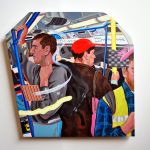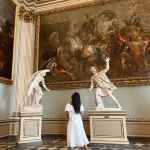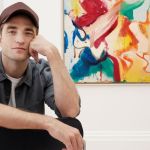
Hello London #6 - Open Source Art Festival 2016
From transgender perspectives to post-apocalyptic visions of Dalston
May 31st, 2016
This weekend Gillett Square, the beating heart of that heterogeneous pot of ethnic groups, influences and activities that is Dalston, was livened up by the second edition of Open Source Art Festival, a stimulating artist-led initiative offering a variegated programme of live performances, exhibitions, installations, videos and so on, that was accessible to all (and totally free).
With the help of the unexpected lovely weather blessing this Bank Holiday weekend, we wandered around the stands of delicious food and the artworks in order to introduce you three of our favorite artists.
#1 RICHARD MULLER – FLY THRU

The orange container covered with rectangular mirrors is no new to the square, what was unusual was having the chance to actually go inside and cut yourself off from reality while, rolled up in total darkness, looking at the video installation by Richard Muller, a multidisciplinary London-based artist using various means and technologies in order to produce artworks comprising video, sound, and installation.
On this occasion, Muller has repurposed a drone as a 3D scan in order to craft his own version of a futuristic Dalston – a theme that's been proposed and reinterpreted by different artists throughout the festival. The video rendering shows us Gillett Square and its surroundings as a spectral and inhospitable scenery, where lined up houses and everyday objects locked in midair, frozen in space and time, float in a glitched-out cyber reality. Suspended cans, empty car parks, buildings that seem to liquefy at the camera's slow passage; then the nighttime, the darkness interspersed by some street light and by screams – that sound more like orders – breaking the silence, leaving who's watching with the unsettling feeling of being monitored, of imminent danger, paranoia and distress.
#2 FLO BROOKS – WHOSE BODIES WHERE

Born in Devon in 1987, Flo Brooks now lives and works in London and is above all a painter, although she loves to take on other practices as well, from collage to sculpture. Her works often reference the commonplace and some daily rituals, reinterpreted through a point of view that's particularly focused on the different perspective a queer transgender person has on situations often taken for granted by others.
Whose Bodies Where, a series of paintings commissioned by Open Source, explores matters such as identity, the synergy between physical body and public spaces and, consequently, the way the latter's perceived by people of different genders and sexualities. The four paintings depict everyday moments such as buying tampons at the supermarket or a morning journey on the tube, and portray the ways people interact with those spaces and how these are shaped by a system of privileges and prejudices, pointing out at public spaces being ill-equipped to deal with the many shades of gender expression.
#3 LAWRENCE LEK – EUROPA, MON AMOUR

A really immersive experience is that proposed by artist Lawrence Lek, master of digital renderings, that he realises through performance, game software and video, with the intent to showcase his virtual – and often gloomy – visions of a near future, every day more dominated by digital realities.
With the EU referendum, a theme that's as thorny as it’s current, as starting point, Lek projects, within an ironic and end extreme vision, the dramatic consequences of an United Kingdom where 'Leave' has won. By grabbing a XBox joypad we're catapulted in a futuristic post-apocalyptic Dalston that's smashed and drifting. The English flag stands out from every corner, marking the re-gained independence and a patriotic feeling that's dangerous as underpinned by mania of grandeur, war helicopters besiege Gillett Square and here, right in the center, the EU symbol is burning in flames, all while the voiceover extracted from Alain Resnais’ Hiroshima, Mon Amour speaks about the nature of memory.










































































